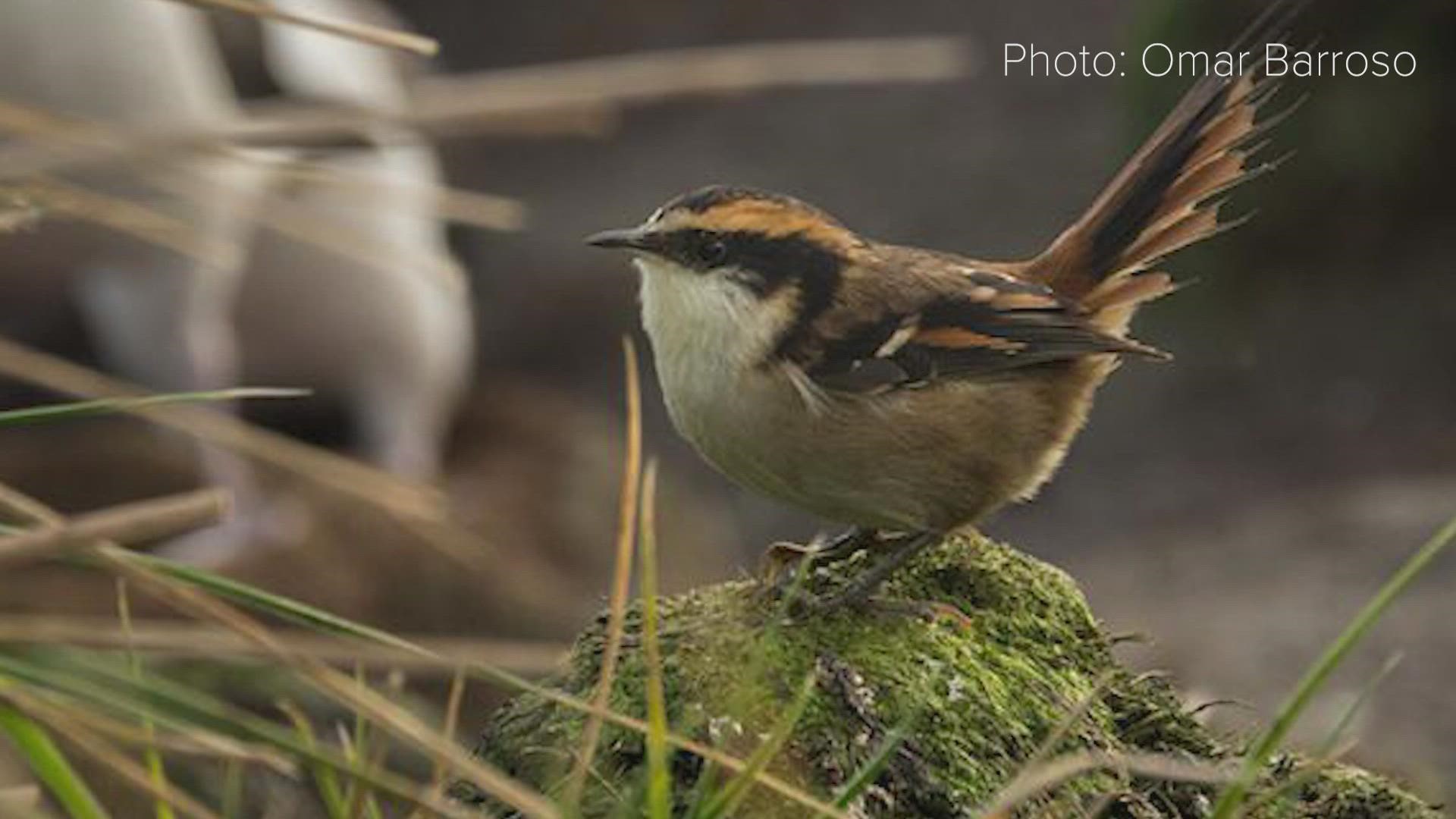DENTON, Texas — A North Texas professor and his research team recently announced they have discovered a new bird species after years of testing and analysis in South America.
Ricardo Rozzi is the director of the University of North Texas Sub-Antarctic Biocultural Conservation Program in Chile. He and his team have been working closely with international collaborators while doing research on a unique, small yellow bird.
On Tuesday, the University of North Texas (UNT) announced that Rozzi's interdisciplinary research team identified a new terrestrial bird species, the Subantarctic Rayadito (Aphrastura subantarctica), in the Diego Ramírez Archipelago. That is the southernmost location in Chile and the Americas.
“This is a significant finding for the bird species itself and for the conservation of its habitat, which is protected by the Diego Ramirez Islands – Drake Passage Marine Park, the largest marine protected area in southern South America that UNT helped create with the Chilean government in 2018,” Rozzi said.
Previously, UNT said scientists have only been able to identify two bird species in the genus Aphrastura (rayadito). One was found in the Juan Fernandez archipelago in the Pacific Ocean of Chile and the other in the forests of Patagonia, which is the geographical region in the southernmost tip of South America that is governed by both Argentina and Chile.
Researchers first came across the new bird species years ago while studying the grey-headed albatross, a large seabird known to inhabit the Diego Ramírez Archipelago. Rozzi noticed this now new bird species spotted close tothe albatross.
The new species is native to the Subantarctic Rayadito, which differs from other Aphrastura species in its genetics.
The first difference revolves around the morphology, which relates to the physical structure of the bird.
Compared to the other two species, the Aphrastura species of birds from the Subantarctic Rayadito have larger beaks, longer tarsi, shorter tails and larger body mass.
The way these birds behave is also unique. The new species move at shorter distances from ground level and nest in ground cavities, mainly at the basis of albatrosses’ nests in a non-forested habitat, according to Rozzi's team.
For the last six years, Rozzi and his research collaborators have conducted field testing and data analysis to confirm the bird exhibited enough differences to be considered an entirely new species.


“I always was curious about this little bird and finally we were able to take the time to study it, analyzing its habitat, life habits and cohabitants from multidisciplinary lenses,” Rozzi said. “This discovery is a great expression of what international collaboration can bring.”
UNT alumnus Ramiro Crego was one of the research team members. He earned his Ph.D. in biology in 2017 and spent time studying invasive species in Chile with UNT’s Sub-Antarctic Biocultural Conservation Program. For the Subantarctic Rayadito, Crego helped in examining the morphology of the bird.
“This work shows us that there’s still so much more to uncover in this world, so many natural mysteries that we still do not know,” Crego said, who is currently a postdoctoral researcher at the Smithsonian Conservation Biology Institute's Conservation Ecology Center. “Living and researching in Chile was such a life-changing experience. The entire program is unique in so many ways. One of the most important lessons I learned during my time there was the value of interdisciplinary research. Bringing all those people together on a program, on different projects, opens your eyes, your brain and your heart to all the perspectives that help inform scientific discoveries like this one.”
Rozzi and his team of international collaborators wrote an article about the new bird species that was published in "Scientific Reports."
The Sub-Antarctic Biocultural Conservation Program aims to approach conservation by coupling the social and ecological dynamics within policy making in Chile's UNESCO Cape Horn Biosphere Reserve at the southern tip of South America.

